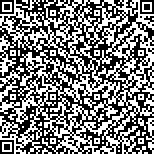张哲,武欢,王小飞,等.重复经颅磁刺激联合电针治疗缺血性脑卒中后认知功能障碍的疗效观察[J].中华物理医学与康复杂志,2025,47(4):313-318
扫码阅读全文

|
| 重复经颅磁刺激联合电针治疗缺血性脑卒中后认知功能障碍的疗效观察 |
|
| |
| DOI:10.3760/cma.j.cn421666-20240902-00706 |
| 中文关键词: 脑卒中后认知功能障碍 重复经颅磁刺激 电针 神经康复 |
| 英文关键词: Stroke Cognitive impairment Transcranial magnetic stimulation Electroacupuncture Neurological rehabilitation |
| 基金项目:湖北省自然科学基金(2022CFB468);武汉市卫健委医学科研项目(WZ21Q09) |
|
| 摘要点击次数: 1672 |
| 全文下载次数: 1666 |
| 中文摘要: |
| 目的 观察重复经颅磁刺激(rTMS)联合电针治疗对缺血性脑卒中后认知功能障碍(PSCI)患者的影响。 方法 选取缺血性PSCI患者183例,按照随机数字表法将其分为rTMS组、电针组、联合组,每组61例。其中,rTMS组、电针组、联合组分别脱落3例、4例、3例,最终共纳入58例、57例、58例。3组患者均给予药物及常规康复训练,在此基础上,rTMS组接受rTMS治疗,电针组接受电针治疗,联合组接受rTMS及电针治疗。治疗前、治疗6周后(治疗后)及治疗后3个月、6个月、12个月,采用蒙特利尔认知评估量表(MoCA)对3组患者开展认知功能评估。治疗前、后,对3组患者进行改良Barthel指数(MBI)、汉密尔顿抑郁量表17项(HAMD-17)、美国国立卫生研究院卒中量表(NIHSS)评估,并利用经颅多普勒超声(TCD)测量患者双侧大脑中动脉(MCA)的平均脑血流速度(Vm)、脉搏指数(PI)和屏气指数(BHI)。治疗后,比较3组患者的治疗总有效率及不良反应发生率。 结果 3组患者治疗后的MoCA评分、MBI评分、HAMD-17评分、NIHSS评分及MCA的Vm均有所改善(P<0.05),且治疗后12个月的MoCA评分进一步改善(P<0.05)。联合组治疗后[(24.50±2.67)分]及治疗后3个月[(25.17±2.41)分]、6个月[(25.26±2.50)分]、12个月[(26.45±2.27)分]的MoCA评分均较rTMS组和电针组高(P<0.05)。联合组治疗后的MBI评分[(69.57±10.01)分]、HAMD-17评分[(12.31±2.39)分]、NIHSS评分[(6.67±3.65)分]、BHI(0.85±0.19)均较rTMS组及电针组优异(P<0.05)。联合组的治疗总有效率(95%)明显高于rTMS组(88%)和电针组(90%),差异有统计学意义(P<0.05)。3组患者的不良反应发生率比较,差异无统计学意义(P>0.05)。 结论 rTMS联合电针治疗能显著改善缺血性PSCI患者的认知功能、日常生活活动能力、抑郁程度及神经功能,且不良反应发生率较低。值得指出的是,rTMS联合电针治疗在改善PSCI患者认知功能方面的远期疗效较好,值得临床应用。 |
| 英文摘要: |
| Objective To observe any effect of combining repeated transcranial magnetic stimulation (rTMS) with electro-acupuncture in treating post-stroke cognitive impairment (PISC). Methods Three groups of PISC patients were formed through random selection: an rTMS group, an electro-acupuncture group, and a combined group. In addition to routine medication and conventional rehabilitation training, the rTMS and electro-acupuncture groups received rTMS and electro-acupuncture treatment, while the combined group underwent both for six weeks. Before the treatment, immediately afterward and 3, 6, and 12 months later, everyone′s cognitive functioning was assessed using the Montreal Cognitive Assessment (MoCA). The modified Barthel Index (MBI), the 17-item Hamilton Depression Rating Scale (HAMD-17), and the National Institutes of Health Stroke Scale (NIHSS) were also applied. Transcranial Doppler ultrasound (TCD) was employed to measure the mean cerebral blood flow velocity (Vm), pulsatility index (PI), and breath-holding index (BHI) in the subjects′ bilateral middle cerebral arteries (MCAs). The total effectiveness rates and the incidence of adverse reactions were compared among the three groups. Results The MoCA scores, MBI scores, HAMD-17 scores, NIHSS scores, and Vm of the MCA had improved significantly in all three groups right after the treatment. There was further significant improvement in the average MoCA scores 12 months later. The combined group showed significantly higher MoCA scores than the other two groups at each time point after the treatment. That group also had superior MBI, HAMD-17 and NIHSS scores and a better BHI compared to the other 2 groups, on average. Its total effectiveness rate was significantly higher too. There was no significant difference in the incidence of adverse reactions among the groups. Conclusions Combining rTMS with electro-acupuncture significantly improves cognition, ADL ability, depression and neurological functioning after a stroke. The combined treatment is worthy of wider clinical application. |
|
查看全文
查看/发表评论 下载PDF阅读器 |
| 关闭 |
|
|
|